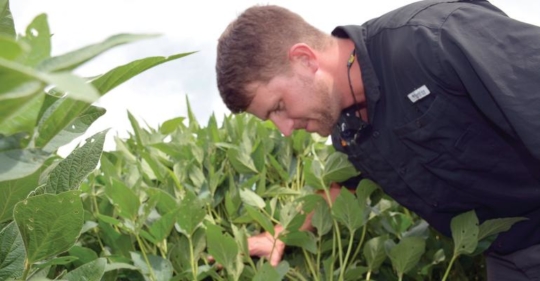Explore our blog featuring articles about farming and irrigation tips and tricks!
Cover Crops Add Benefit To No-till Systems

By: Ron Smith
Cover crops will pay for themselves, according to speakers at the annual Milan No-Till Field Day — but maybe not every year and probably not the first year.
Several factors affect how well crops planted into a cover perform, including the cover crop mix, weather, and planting date.
Brian Kozlowski, research associate in the University of Tennessee Department of Biosystems Engineering and Soil Science, discussed planting methods and the effect cover crops have on crop yields at one of 16 research tour stops.
Kozlowski said ongoing studies evaluate the effect various cover crop mixes and planting techniques have on a soybean-corn rotation system. One study examines the planting date, another looks at seeding method (broadcast vs drill).
“Plant as early as possible,” Kozlowski said, “to obtain as much biomass as possible. Our results show that earlier-planted cover crops tend to produce more aboveground biomass, and thus suppress more weeds.”
Weather is a factor with cover crop stands. “Too much or too little moisture will affect emergence and cover crop establishment,” he said.
See also: Successful use of cover crops may require seed treatments
The seeding method study shows no significant soybean or corn yield differences in years with adequate moisture. “In dry or wet years, cover crop establishment was poor if the seed was broadcast, so drilling is recommended.”
Stay up to date on all T-L news and get alerts on special pricing!


